The National Register of Historic Places (NRHP) is the United States federal government's official list of districts, sites, buildings, structures, and objects deemed worthy of preservation for their historical significance or "great artistic value". A property listed in the National Register or located within a National Register Historic District, may qualify for tax incentives derived from the total value of expenses incurred in preserving the property.

The French Quarter, also known as the Vieux Carré, is the oldest neighborhood in the city of New Orleans. After New Orleans was founded in 1718 by Jean-Baptiste Le Moyne de Bienville, the city developed around the Vieux Carré, a central square. The district is more commonly called the French Quarter today, or simply "The Quarter", related to changes in the city with American immigration after the 1803 Louisiana Purchase. Most of the extant historic buildings were constructed either in the late 18th century, during the city's period of Spanish rule, or were built during the first half of the 19th century, after U.S. purchase and statehood.
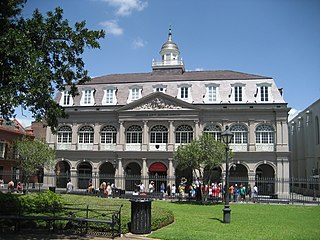
The Cabildo, originally called "Casa Capitular", is a historical building in New Orleans, Louisiana. Originally the seat of Spanish colonial city hall, the building now forms part of the Louisiana State Museum. It is located along Jackson Square, adjacent to St. Louis Cathedral.
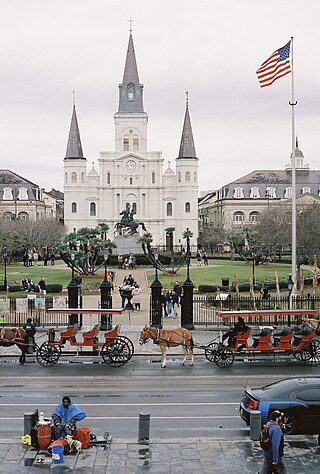
Jackson Square, formerly the Place d'Armes (French) or Plaza de Armas (Spanish), is a historic park in the French Quarter of New Orleans, Louisiana. It was declared a National Historic Landmark in 1960, for its central role in the city's history, and as the site where in 1803 Louisiana was made United States territory pursuant to the Louisiana Purchase. In 2012 the American Planning Association designated Jackson Square as one of the Great Public Spaces in the United States.

The Great New Orleans Fire (1788) was a fire that destroyed 856 of the 1,100 structures in New Orleans, Louisiana, on March 21, 1788, spanning the south central Vieux Carré from Burgundy to Chartres Street, almost to the Mississippi River front buildings. An additional 212 buildings were destroyed in a later citywide fire, on December 8, 1794.

The Presbytère is an architecturally important building in the French Quarter of New Orleans, Louisiana. It stands facing Jackson Square, adjacent to the St. Louis Cathedral. Built in 1813 as a matching structure for the Cabildo, which flanks the cathedral on the other side, it is one of the nation's best examples of formal colonial Spanish architecture. It was designated a National Historic Landmark in 1970, and is now a property of the Louisiana State Museum.
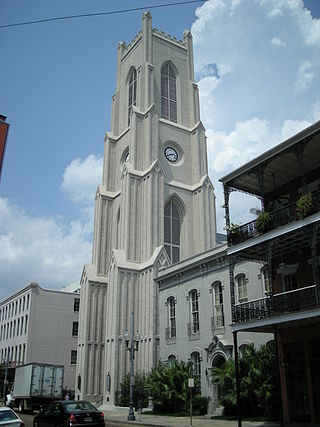
St. Patrick's Church is a Catholic church and parish in the Archdiocese of New Orleans, Louisiana, United States. The parish was founded in 1833, and the current structure was completed in 1840. It is the second-oldest parish in New Orleans, located upriver from the French Quarter at 724 Camp Street in what is now the Central Business District. The building, a National Historic Landmark, is one of the nation's earliest and finest examples of Gothic Revival architecture.

The Pentagon Barracks, also known as the Old United States Barracks, is a complex of buildings located at the corner of State Capitol Drive and River Road in Baton Rouge, Louisiana, in the grounds of the state capitol. The site was used by the Spanish, French, British, Confederate States Army, and United States Army and was part of the short-lived Republic of West Florida. During its use as a military post the site has been visited by such notable figures as Zachary Taylor, Lafayette, Robert E. Lee, George Custer, Jefferson Davis, and Abraham Lincoln.

Louisiana State Bank Building is a historic commercial building at Royal and Conti Streets in the French Quarter of New Orleans, Louisiana. Built in 1820, it was the last structure designed by nationally prominent architect Benjamin Henry Latrobe, who died from yellow fever in New Orleans before its construction. It has also been known as the Manheim Galleries building, from a long-time tenant. More recently, it has housed "Latrobe's", an event venue. It was declared a National Historic Landmark in 1983.

Brignais is a commune of the Rhône department in eastern France.

Vieux Carré Property Owners, Residents, and Associates (VCPORA), organized in the 1920s, is a pioneer organization in the historic preservation movement that grew out of several grass roots efforts to protect the 200-year-old Vieux Carré from decay and demolition. In 1936 the Louisiana state legislature passed a constitutional amendment authorizing the historic preservation of the Vieux Carré. Two years later on June 8, 1938 the neighborhood organization incorporated as a non-profit dedicated to the preservation, restoration, beautification and general betterment of the Vieux Carré.

Longfellow-Evangeline State Historic Site, located in St. Martinville, Louisiana, showcases the cultural significance of the Bayou Teche region. It is the oldest state park site in Louisiana, founded in 1934 as the Longfellow-Evangeline State Commemorative Area. Evangeline was Henry Wadsworth Longfellow's enormously popular 1847 epic poem about Acadian lovers, who are now figures in local history. In the town center, the Evangeline Oak is the legendary meeting place of the two lovers, Evangeline and Gabriel. A statue of Evangeline marks her supposed grave next to St. Martin of Tours Church. The state historic site commemorates the broader historical setting of the poem in the Acadian and Creole culture of this region of Louisiana.
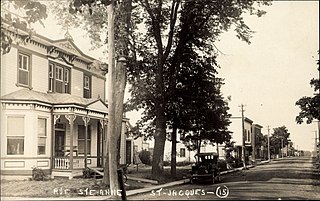
Saint-Jacques is a 26 mi² rural municipality in the Lanaudière region of Québec, Canada, part of the Montcalm Regional County Municipality with a population of 4,300 year-round residents.

Trinity Episcopal Church is located in Cheneyville, Louisiana.
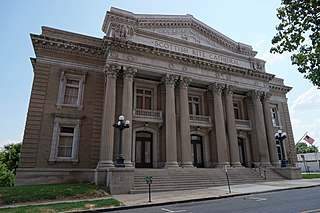
The Scottish Rite Cathedral is a historic building located at 725 Cotton Street in Shreveport, Louisiana. It was designed in 1915 by architect Edward F. Neild in Beaux Arts style.

The Church of the Holy Cross (Episcopal), which housed St. Mark's until 1954, is a historic church at 875 Cotton Street in Shreveport, Louisiana, United States. The first services of the Episcopal church in Shreveport were celebrated by the Rt. Rev. Leonidas Polk, the Bishop of Louisiana in March 1839. That liturgy is considered the founding day of St. Mark's Church. Prior to this church building, the church was located on Fannin Street. St. Mark's moved into a new church building at Fairfield Avenue and Rutherford Street in 1954. That church became the cathedral of the Diocese of Western Louisiana on July 7, 1990.

The Basilica of the Immaculate Conception is a minor basilica located in Natchitoches, Louisiana, United States. It is also a parish church in the Diocese of Alexandria. The church building is the seventh structure to house the parish and was at one time the cathedral for the Roman Catholic Diocese of Natchitoches. As the Church of the Immaculate Conception it was listed as contributing property in the Natchitoches Historic District on the National Register of Historic Places.
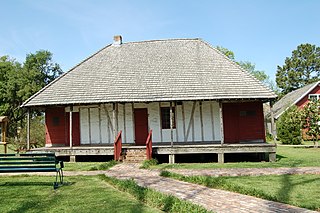
The Venus House is a historic house located in Opelousas, Louisiana in the United States. The house is named after its former owner and occupant, a free Creole woman of color, Marie Francois Venus. It is one of the oldest houses of its kind in the Lower Mississippi Valley. Today, the house serves as the center piece of the Le Vieux Village.

The Fontenette-Bienvenu House, at 201 N. Main St. in St. Martinville, Louisiana, was built in 1817. It was listed on the National Register of Historic Places in 1997.



















